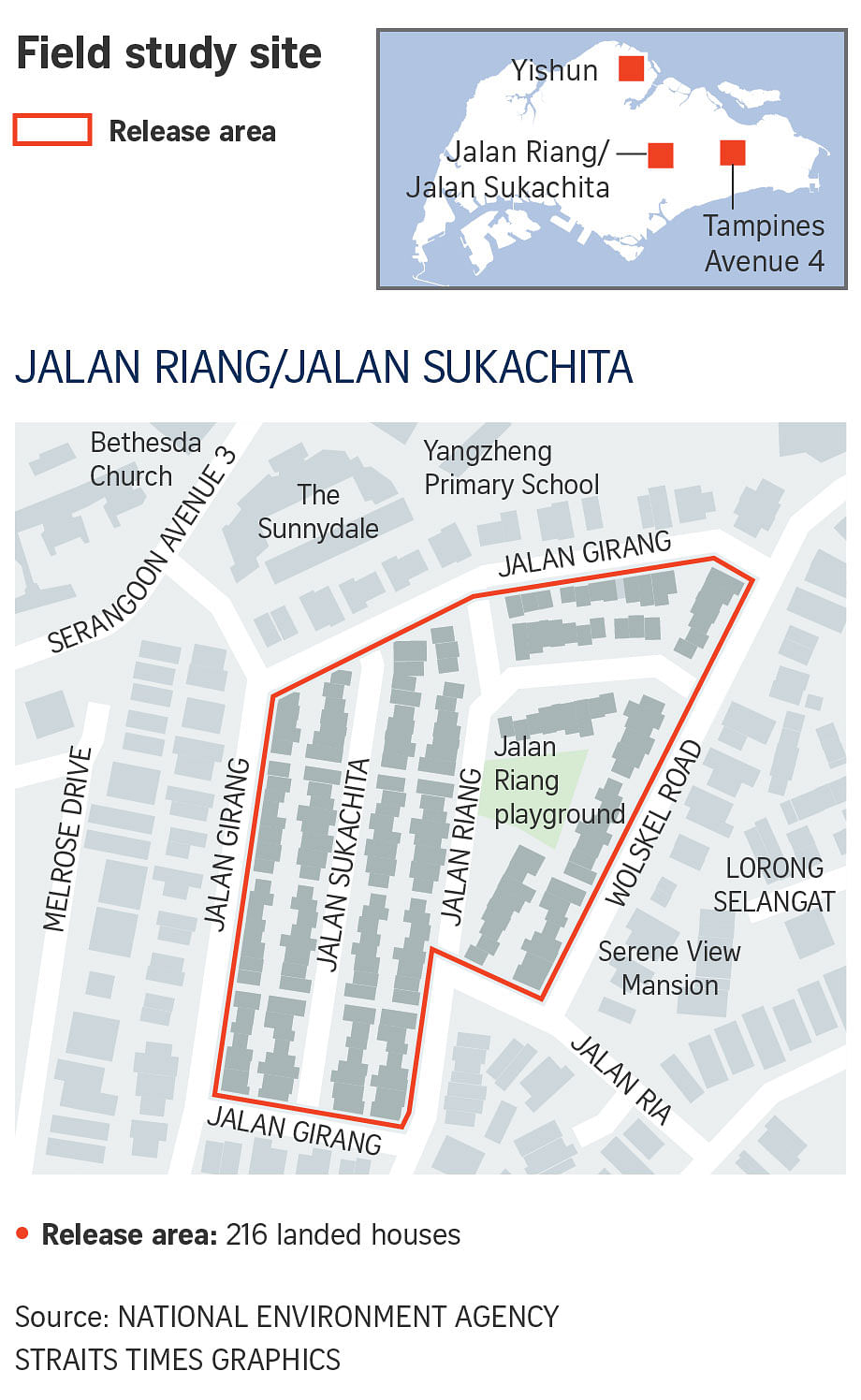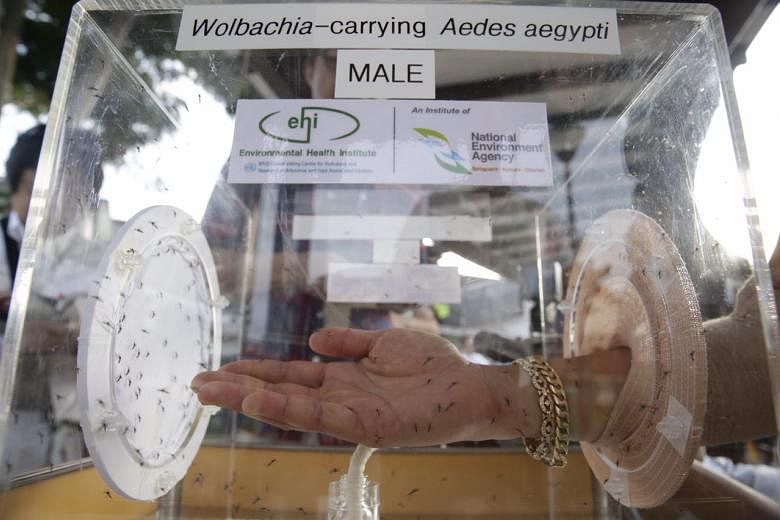SINGAPORE - About 3,000 male Aedes aegypti mosquitoes were released at Braddell Heights estate on Tuesday morning (Oct 18) by the National Environment Agency (NEA) in a pioneering field study to understand the behaviour of the disease-transmitting mosquito species.
This is the first batch of the infected mosquitoes to be released.
The male mosquitoes, which neither bite humans nor transmit disease, have been artificially infected with Wolbachia bacteria. When these males mate with uninfected females, the resulting eggs will not hatch.
Traps have been placed in public locations and residential premises around the estate to recapture the mosquitoes and determine how far they have flown from the release point in Jalan Sukachita.

Mr Seah Kian Peng, MP for Marine Parade GRC, said it was a privilege for Braddell Heights to be part of this six-month long study.
When he found out what NEA was planning to do, he asked them to "please come to Braddell Heights first".
The study is being done by a team of more than 30 at NEA's Environmental Health Institute (EHI) who have spent the last four years studying Wolbachia in the laboratory.
EHI director Associate Professor Ng Lee Ching thanked resident volunteers who have allowed NEA to place fan traps in their homes to capture mosquitoes. "The people who host the fan (traps) are one of our most important partners."
Two other sites will be added to the study in the near future, when mosquitoes are released in Tampines West on Oct 28 and Nee Soon East on Nov 15.

Regular releases will be made at these sites over the next six months to accumulate data. The data will go into mathematical modelling to help the researchers design future studies on how Wolbachia suppresses hatch rates in the field.
NEA said in a media statement that if these studies are successful, it hopes to use Wolbachia technology to complement the agency's existing vector control efforts and reduce the spread of diseases by the Aedes mosquito, such as dengue.





